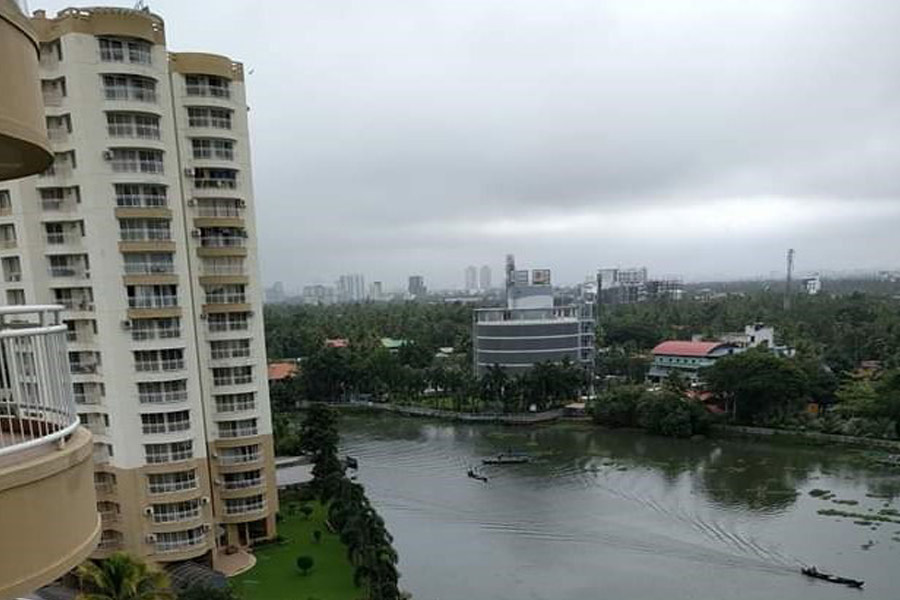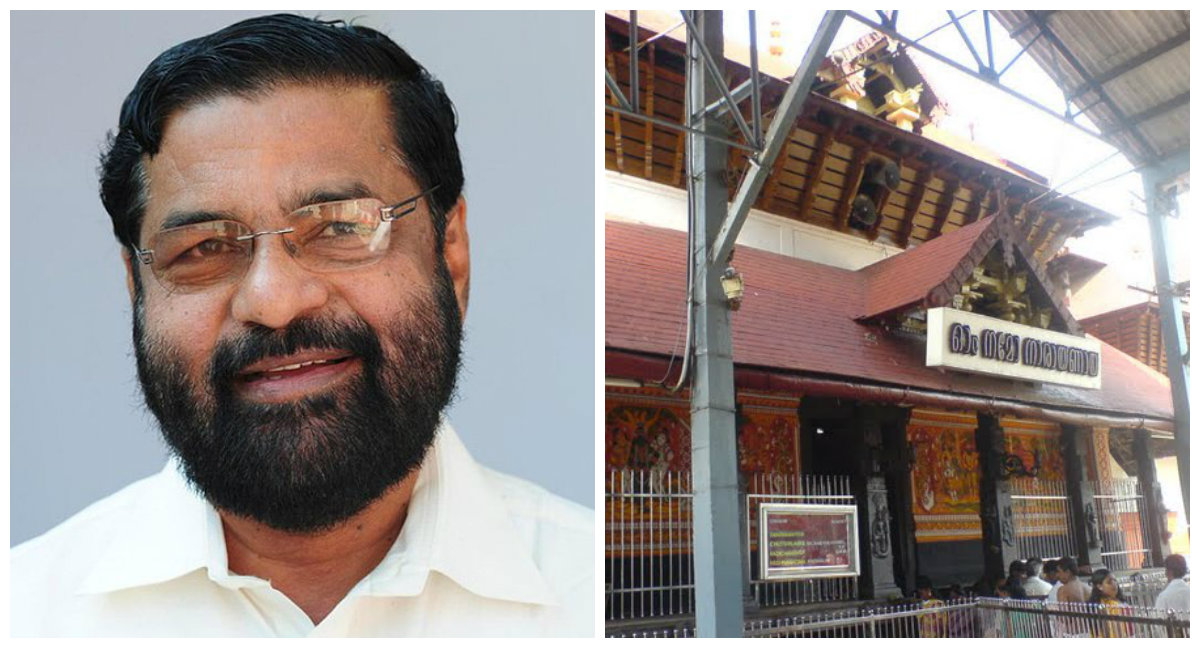Some of the biggest violations of the Coastal Regulation Zone (CRZ) Rules, which regulates construction activities in the ecologically sensitive coastal areas that lie in close proximity to the seas and the backwaters, happens in Kerala. According to one report, there are some 1800 buildings, including star hotels, luxury apartment blocks, shopping malls and tourist resorts constructed in violation of the CRZ rules.
On May 8, 2019, the Supreme Court ordered the demolition of four illegal luxury apartments with a carpet area of 80,000 square meters in Maradu Municipality, Kochi on the banks of the Vembanad Lake, a protected Ramsar Site. The Kerala State Coastal Zone Management Authority (KCZMA) is the appellant and the Government of Kerala (GoK) is the respondent in the case.
The demolition is being carried out by Kerala government and the Maradu Municipality. They have not published any study report or document related to this project. No information or data is available on any Government website.
A brief history
After May 8 order, for four months, the KCZMA or the Government of Kerala (GoK) failed to inform the apex about (a) the impracticability of demolishing the buildings within 30 days, and (b) the need to conduct an environmental impact assessment first. On Sep 4, some 12 weeks after the expiry of the one-month deadline, the SC initiated a suo motu case against the GoK for non-compliance of its order. In the affidavit, GoK submitted that “the demolition process requires appropriate technology and machinery and expeditious disposal of debris; as on today, there are space constraints for the proper disposal of the waste/debris without proper study and planning”. As the Court was not impressed by this ‘lame’ excuse, on Sep 27, the GoK submitted a schedule of 138 days for the demolition and clearance of debris. The schedule did not include studies of the site characteristics and environmental impact analysis (EIA).
Environmental Impact Assessment
Earlier in 2017, the KCZMA had decided that environmental impact assessment would be done before the demolitions of buildings constructed in violation of the CRZ Notification. No EIA has been done in this case.
Three weeks after the Apex Court’s order, Dr Usha Titus, chairperson, KCZMA said, “The Indian Institute of Technology, Madras (IIT M) has been asked to advise on the best possible method to demolish the buildings with little environmental impact and cost of restoration of the said places in CRZ.” IIT M submitted the report on Sep 17. The report mentions the potential environmental hazards and states that “the team did not get enough time and background information for a detailed study” on environmental issues. The IIT’s feasibility report authored by eight civil engineers has been repackaged as the EIA report in the affidavits submitted in the Supreme Court.
No knowledge of the consequences
Since the middle of October 2019, two demolition contractors have been doing the pre-implosion works like removing non-load bearing walls and structures. The buildings under demolition are 50-65 metres high, and hardly a decade old. Since no such tall, strong building has been demolished in the country, this can be considered as an experiment. All the four buildings are within a radius of 3-kms. An in-depth study of impacts is warranted because of (a) the hazards involved in the demolition process, (b) vulnerability of the eco-system, (c) high population density and (d) critical and strategic infrastructure around the buildings to be demolished. Besides, there has been no discussion on the merits and demerits of different types of demolitions like deconstruction, demolition by a combination of manual labour and machines, and implosion demolition.
Site Characteristics
The soil type is ‘water-saturated mud’ and the site falls in seismic zone-III. The area has 3600 people and 1000 buildings in one sq km. There are also critical strategic assets like underground oil and gas pipelines in the impact area. These illegal water-front apartments are on Champaraka Canal and the Nettoor stream. The four apartments are almost on a 3 km long North-South straight-line. The distance between apartments No 1 and 2 (from North) is 1.8 km, No 2 and 3 is 300 m and 3 and 4 is about 600 meters. In the circles with radii of 1000 m drawn from all the four buildings, there is an overlapping area of one square kilometre within the circles of apartment No. 2, 3 and 4. Assuming that the impact would be felt within a radius of 1000 m, this overlapping area will be subjected to vibrations from three implosions. This area has an estimated population of 3500. It appears that the importance of the geology, and demographics and the inter-implosion interactions have not been factored in by the expert committee in charge of demolitions.
Engineered Tremors
Pre-implosion preparatory works like removal of separation walls and other non-load bearing structures etc are done by men and machines. According to the Rule Book, these works are to be done with least impact on population and properties nearby. Vibration from falling debris and operation of heavy machineries was a serious issue during November-Dec 2019. Walls and staircases of 16 building were damaged due to vibrations. Damaged buildings are located within radii of 150 meters from the apartments.
Seismic Monitoring
Monitoring of vibration is a pre-condition in demolition works of this dimension. If the monitoring shows levels above the permissible limits or the nearby structures are affected, the activities have to be suspended. Seismic monitoring was not done during the six weeks of pre-implosion preparations, when the near-by buildings suffered damages. Had this been done, all damages after the first one could have been avoided. Incidentally, seismic monitoring is to be organized by the demolition contractor. Since the seismographs are the only evidence to prove that the damages occurred due to the contractors’ actions. According to media reports, the Indian Institute of Technology, Madras will do the seismic monitoring during the implosions.
Evacuation and Insurance Coverage
During the implosions, the neighbourhoods will have to be evacuated to a safer locations. There must be provision for third party insurance coverage, in case of injuries or damages to the properties. Insurance policy is also the responsibility of the contractors. As the contractor did not do this, the GoK has paid the premium, two months after the award of contracts. Details of seismic monitoring and finalization of insurance policy must be completed before signing of the demolition contracts. There is conflicting reports about the radii of insurance coverage and evacuation. In the beginning, the officials said evacuation zone was 500 m, and then they reduced it to 50 and 100 meters. According to the latest announcement, the radius of evacuation zone is 200 m and the insurance coverage is 50 m.
Sequence of demolitions
The Maradu demolition is different from past demolitions in the country considering the age and site of the buildings. In view of this the Indian Institute of Technology, Madras developed “a model for demolition of high-rises which could be tried at Maradu”. In short, this is an experiment. The Government’s initial plan was to demolish Holy Faith and Alfa Serene Apartments located on the East and West banks of the Nettoor Stream on the first day. All complaints of dust and noise pollution and damages to buildings were reported with 150 m radii of these buildings. The neighbourhood has been opposing the demolition as they fear that their houses could be destroyed due to vibrations during the implosions. The people do not trust the official assurances safety and of insurance coverage. They are demanding that the two apartment blocks, located in an area with low population density be demolished on the first day. Though the minister for local self government promised to consider the request, the technical committee in its meeting on January 3, 2020 decided to go with the original schedule. The reported reason for not swapping the dates is that it will inconvenience the contractors. Considering the experimental nature of the project and the vulnerabilities of the neighbourhood, it would be prudent to experiment with the building with lower risks, if the implosions cannot be postponed.
Violations
Besides the creation of a class of bystander victims, the implementation of this project also violates five Notifications/Rules/Standards from the Government of India, relevant for the current project. These are (i) EIA Notification-2006, (ii) Coastal Regulation Zone Notification of 2019, (iii) Hazardous and other Wastes (Management and Tran boundary Movement) Rules- 2016 (iv) the Construction and Demolition Waste Management Rules, 2016 and (v) Indian Standards for Demolition of Buildings. Fundamental rights of nearly 300 families and children in an orphanage near the building have been abrogated. The demolition is going to cause toxic dust, noise pollution and intermittent engineered earthquakes. The Supreme Court only ordered to remove the buildings; it did not ask to demolish the Constitution.
Demolition without Planning
The demolition project must be assigned to known contractors with proven capabilities. Vijaya Steels and Explosives, the contractor who is demolishing the twin towers of Alfa Serene does not have a web site. Is it a newly formed entity? Incidentally, three important members in the demolition team had expressed their dissatisfaction against this company. The officials have also attributed the engineered earth quakes to the safety lapses of this contractor. There is no document on this mega project on the official website of GoK, KCZMA or the Municipality. The names, qualifications and other details of the expert committee members are not known. In response to the reports of damages to houses during demolition works, one expert said that they did not know that there are structurally weak buildings near the implosion sites.
Quantity of Explosives Not Finalized till 27 Dec 19
When these buildings, which stand on foundations of 5 metres in depth come crashing down, will the marshy land withstand the impact? The safety experts raised this issue on Dec 25, 2019 and decided to check the stability of the soil in the areas surrounding the apartment to assess how the soil structure would take the impact of the demolition. Two days later another expert said, “We have a report on the soil quality, which will be considered while finalising the quantity of explosives. On that day, about 75 per cent of the drilling work was completed. On Dec 31, 19, the first consignment of emulsion explosives reached the district.
Conclusion
Ankita, a class V student, from Maradu Municipality requested the Chief Minister of Kerala, Prime Minister of India and the Chief Justice of the Supreme Court to help her in case her house is destroyed during the impending implosion demolitions. Ankita is among the dozens of children who could not prepare for their examinations due to the dust, noise pollution and shaking. After the vibration caused damages to 16 buildings within 150 m of the apartments, it is quite natural for the people to be anxious about bigger damages during the implosions.
The third party insurance will not give them a home; it will only provide the market rate for the houses in case of total damage. Are the collateral damages and injuries experienced by the people and the fear of bigger ones normal in implementation of a court order? Implementation of a judicial order, which should have been planned meticulously, must not create collateral victims. Three months ago, 325 families were forced out of their homes.
This second stream victims are the product of the inept handling of the case in Apex Court after May 8 2019 and starting the demolition works without a detailed study of the site and an environmental impact assessment. Considering the unaddressed concerns about bigger shakings during the implosions, it would be wiser to postpone all implosion till detailed studies are conducted.
The four apartment blocks will be implosion-demolished on 11 and 12 Jan 20. The house owners near the demolition sites scheduled for the first day are not co-operating with the officials, as their concerns about the safety of their houses have not been addressed. These people were on the receiving end of all the damages and dust and noise hazards during the pre-implosion works. Since this is an experiment, the demand to demolish the other two buildings with low density of population and buildings should have been considered for there have been no complaints from the neighbourhood of those apartments and they do not oppose the swapping. But the government has not bothered to listen to their concerns.
First published by Counter Currents







